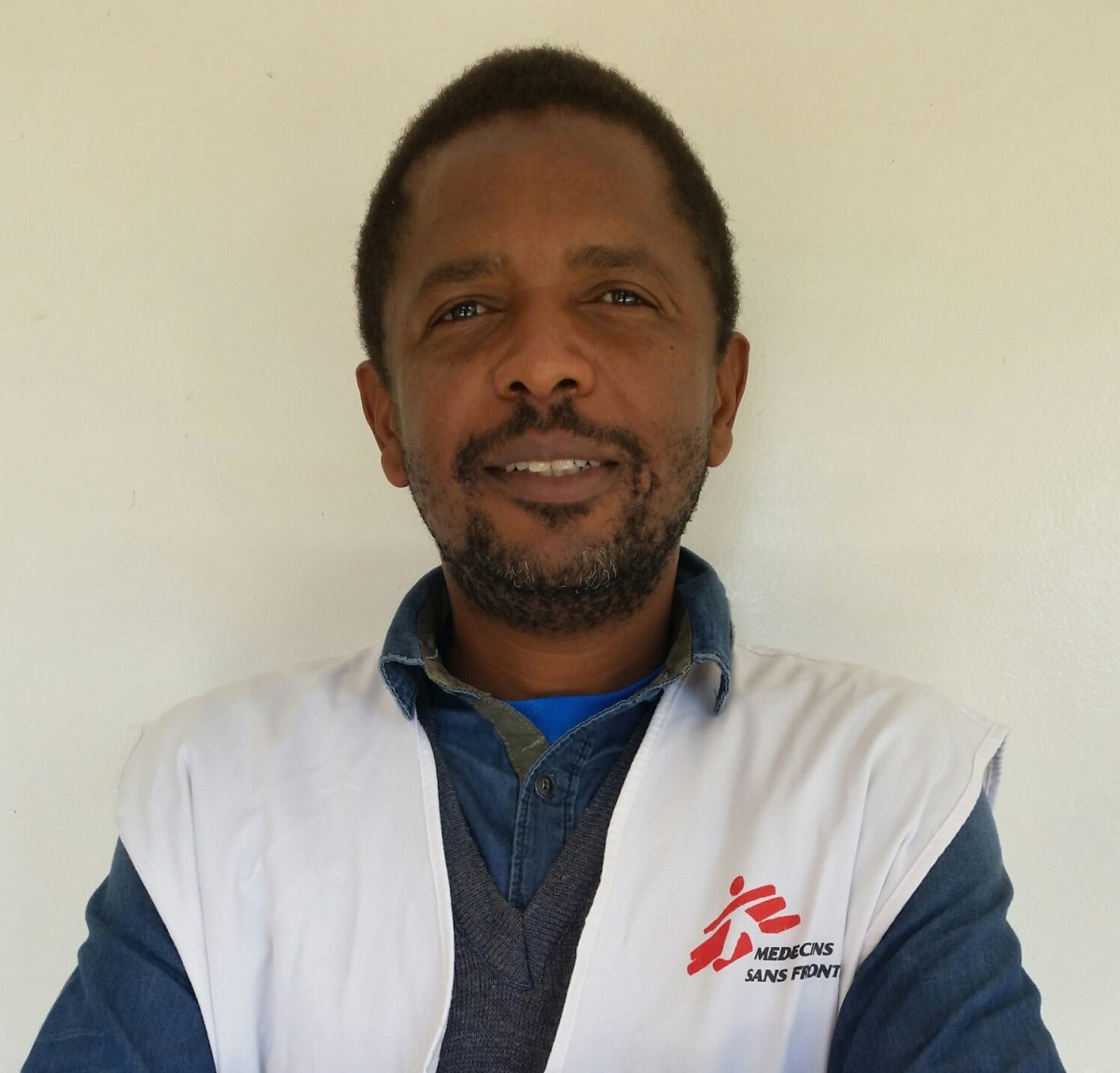Charles Ronoh, aged 43, is a Kenyan nurse who has worked on HIV projects with Doctors Without Borders (MSF) in Kenya and Zimbabwe.
Over the past year, Charles has been working in Gutu, near Masvingo in Zimbabwe. The project supports 29 health facilities – including clinics and hospitals – focused on provision of antiretroviral therapy (ART), treatment of opportunistic infections as well as offering viral load testing and cervical cancer diagnosis.

MSF contributes to supplying ART in the facilities as the Zimbabwean Ministry of Health (MoH) has limited capacity to do this.
In his role as project coordinator, Charles is responsible for ensuring that all medical activities run smoothly, while also networking with the MoH and other NGOs in the area to avoid a duplication of services. He also provides support in mentoring staff on conducting viral load testing and initiating patients on second-line treatment.
“The viral load is the amount of HIV in the blood sample taken by the medical professional,” explains Charles. “If the viral load of a person on first-line treatment goes above 1000 copies/ml they will need to be put on second-line treatment.”
“The Gutu project’s greatest success has been increasing the ART coverage rate among the population from just 11% back in 2011 to a level of 82% coverage today,” he explains. “Another major achievement was establishing the community ART refill groups, where patients rotate visits to facilities to collect their meds – saving them time and money. As elsewhere in Southern Africa we have found this strategy really helps to support treatment adherence by removing some of the basic challenges patients have in just getting their treatment.”
Charles’ past experience includes working at the MSF-run Kibera South Health Centre inside Nairobi’s biggest slum areas, from 2008 to 2012. In his time there, the centre provided outpatient and maternal health services, HIV and TB treatment as well as treatment for chronic diseases.
Charles played a key role in the technical aspects of HIV and TB management which included treating patients with opportunistic infections - mostly kaposi sarcoma and TB - and initiating people onto ART. “I saw the power of antiretrovirals (ARVs) and how they help really very ill patients return to their normal lives. The major recovery I’ve witnessed in patients on ARVs motivates me to keep working against HIV.”
Comparing his HIV work in Zimbabwe and Kenya, Charles says multiple sexual partners – especially among young people – are a major driver of new infections in both countries.
Poverty also fuels HIV infection among youth because they’re engaged in transactional sex to pay for an education or to support their families’ basic needs. “When worrying about everyday survival, many people have little motivation to protect themselves from HIV – a disease that could only start affecting them years later,” Charles adds.
Major differences between the two countries are that the 2015 HIV prevalence rate in Kenya was 5.9%, while it stood at 15% in Zimbabwe. “A reason for this is that Kenya has greater availability of ART than Zimbabwe,” he explains. “However, Zimbabweans have higher knowledge levels around managing an HIV-positive status.”
In Kenya, Charles says, people don’t discuss HIV as openly as they do in Zimbabwe as they regard the subject as taboo.
Find out more about MSF's work in Zimbabwe.